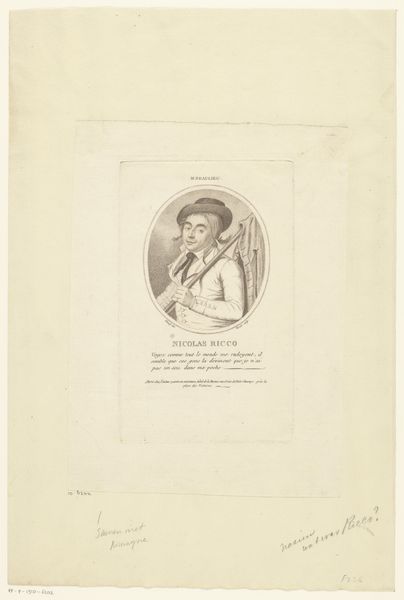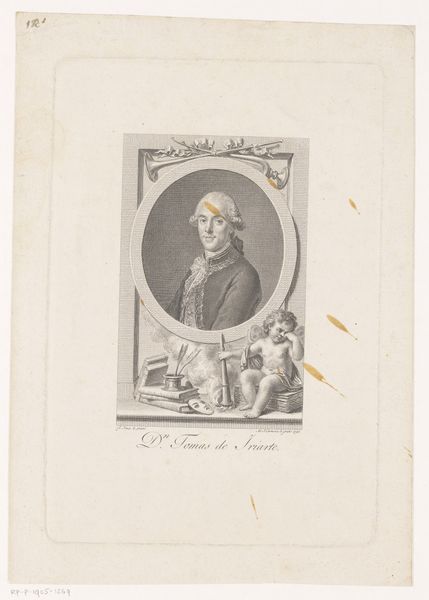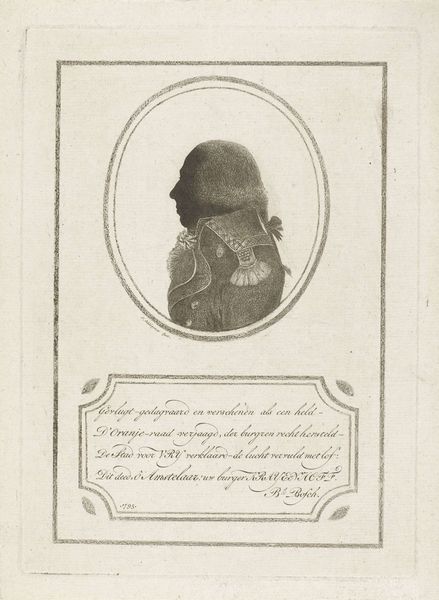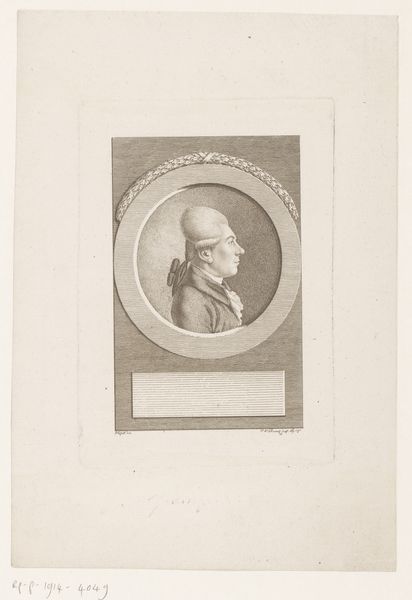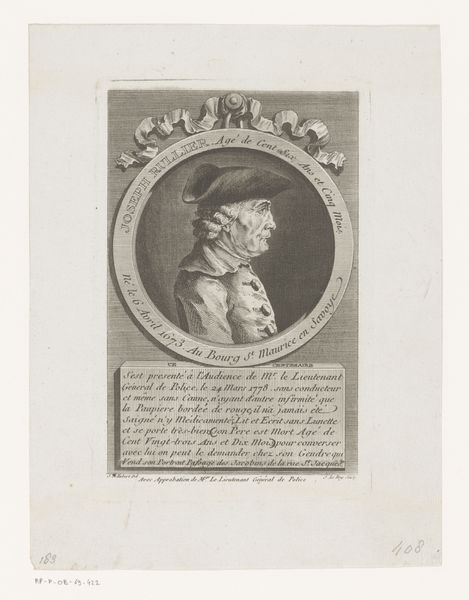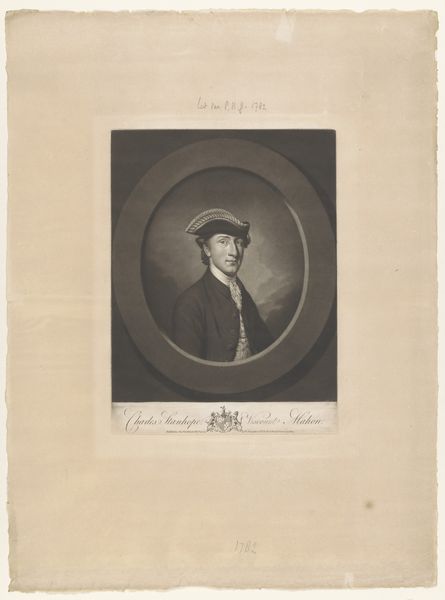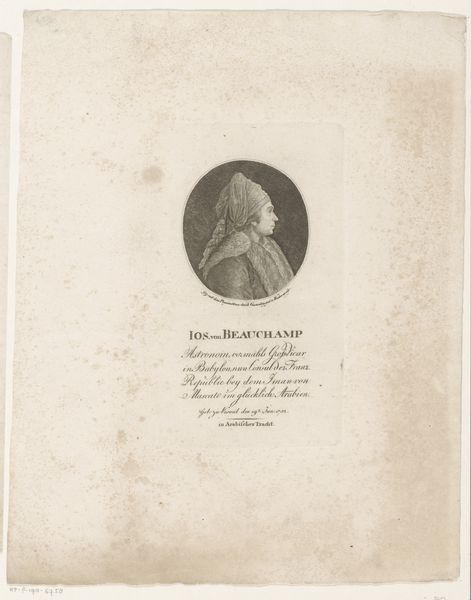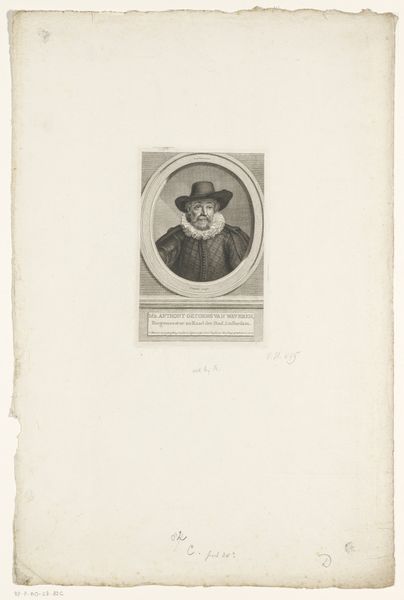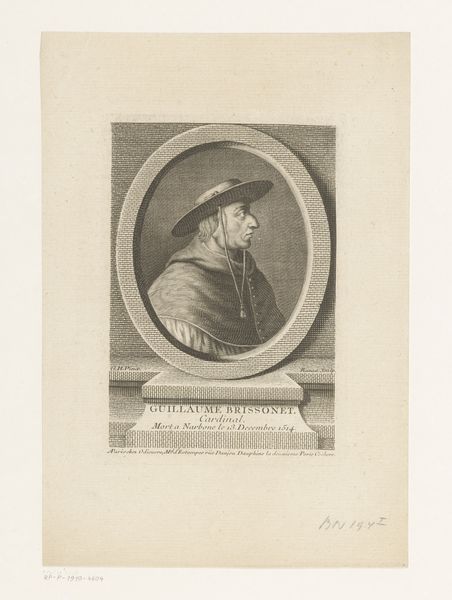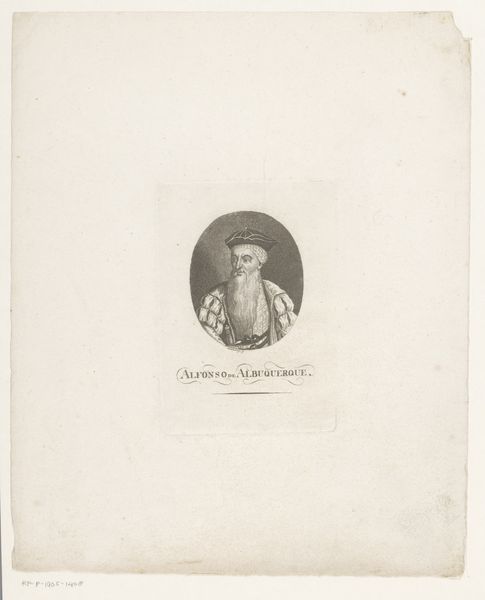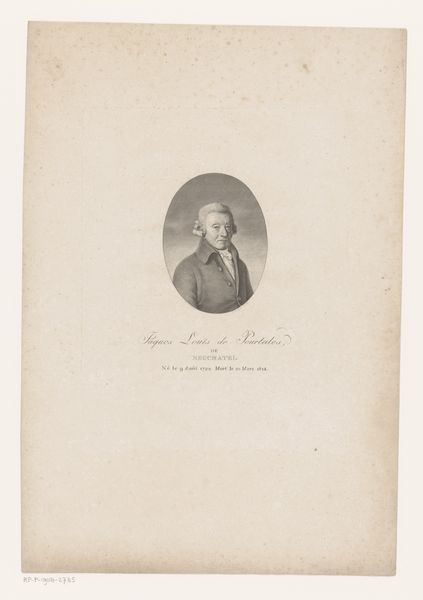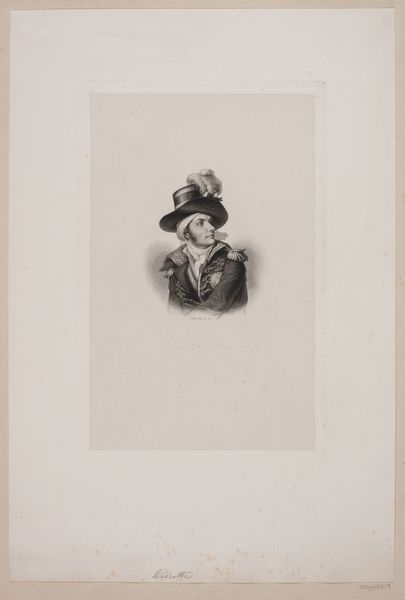
Dimensions: height 386 mm, width 255 mm
Copyright: Rijks Museum: Open Domain
Curator: We're now looking at a print from between 1786 and 1798 titled "Portret van een onbekende man" or "Portrait of an Unknown Man," attributed to E.J. Glairon-Mondet. It emulates the style of the Baroque. Editor: It’s striking how the figure emerges from the darkness; a palpable, somber presence, almost melancholic in its line work and chiaroscuro. There’s a theatrical air in that half-shadowed face. Curator: Yes, the Baroque style lends itself to that dramatic sensibility. But think, too, about the act of reproducing an image like this via engraving. What choices did the engraver make about the density of lines to simulate value? How might the quality of paper, or even the workshop conditions, have affected the final product? Editor: Indeed! The "old engraving style," as it’s been tagged, involved a whole series of processes and material considerations – the creation of the plate, the inking, the printing itself, each stage imposing limitations and enabling particular aesthetic qualities. What kind of labour went into producing these types of works? Curator: Precisely! Furthermore, engravings such as these often served a didactic purpose, making artworks accessible to a wider audience. They become tools for disseminating cultural and historical narratives. In the symbolic language of portraiture, the gaze, the hat... what meanings can you pull out of the semiotic tapestry? Editor: Right, a symbol has an intended value, but then how do all the steps of mass-producing it change the experience for the viewer? Maybe the very reproducibility shifts its symbolic resonance from singular power to broader cultural understanding? Curator: An interesting observation. So, by deconstructing its creation, and thinking about consumption, it frees this face, even if "unknown," from any specific constraints. Editor: This portrait reminds me that what we often perceive as the rarefied "art world" is inherently reliant on systems of production, labor, and distribution. A network, made possible with the very materials used. Curator: Indeed! We’ve begun to unravel some of the cultural threads interwoven within this image, opening a space for broader dialogues about symbolism and production.
Comments
No comments
Be the first to comment and join the conversation on the ultimate creative platform.


